Medal of Honor: Allied Assault – Become a WWII Legend
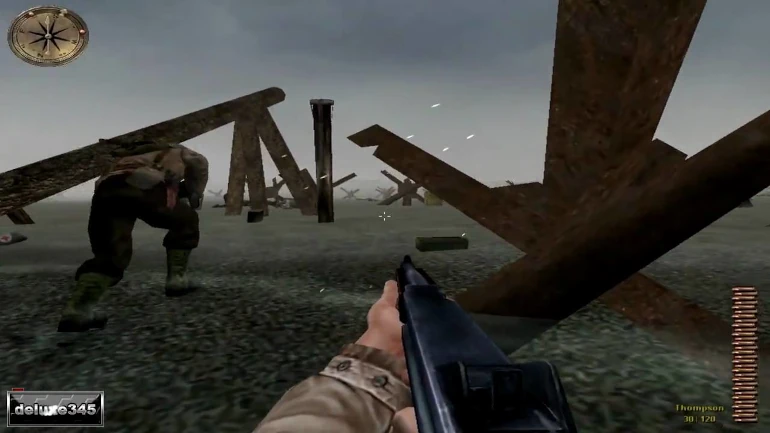
When we talk about certain games, sometimes just mentioning the name is enough to make fans rush out to get their copy. Today, fans of the series created by DreamWorks under Spielberg’s direction—set in the World War II conflict—have reason to celebrate. After nearly two years of waiting since MOH Underground, a new installment of this successful game is now available for PC.
One of the first thoughts that might cross the minds of die-hard fans is how the game has fared after the developer change. DreamWorks Interactive handled the first two entries, which were huge successes. This time, however, the reins have been passed to 2015, a team that had previously only worked on an expansion for another game called Sin (the expansion was titled Wages of Sin). Electronic Arts reached out to them, and after a promising demo, they signed the contract to develop a full version.
Medal of Honor Allied Assault doesn’t just work as a sequel—it surpasses its predecessors in almost every way. It keeps the series’ key elements: a gripping World War II setting with immersive graphics and sound, fast-paced gameplay, advanced AI, and, of course, the unforgettable soundtrack that won over so many fans.
But let’s take a closer look.
In the previous games, we played as a Special Forces operative and later as a French Resistance fighter. Both games emphasized the team’s goal of plunging players into a spectacular, cinematic war experience (though not necessarily realistic, leaning more toward arcade-style action). This time, we step into the boots of Mike Powell, an elite Ranger, and take on 20 thrilling missions that’ll leave you breathless. These missions are based on real WWII operations, taking us through diverse locations—from North Africa to Germany, Norway, and France.
Before diving deeper into the review, there are a couple of interesting points worth noting. First, the game doesn’t show blood (despite its 16+ age rating). Second, despite the lack of gore, it manages to achieve a high level of visual realism in certain moments. Some missions immerse you so deeply that you can feel the fear of Powell’s comrades. The game is inspired by a historical period where over 50 million people died, so it’s only natural that it’s intense.
For example, during the D-Day landing, while you’re scrambling for cover behind a barricade to avoid enemy machine-gun fire, you might expect to see rivers of blood mixing with the tide or your comrades blown apart by explosions. But in MOHAA, the effects are toned down—shooting enemies only produces small dust clouds, and grenades send them flying without gory details (though there’s a mod that adds blood splatters and changes the dust clouds to red if you prefer a more hardcore experience).
The game remains exciting and gripping, and despite the developer switch, it maintains its quality. Medal of Honor Allied Assault promises fans and newcomers alike an immersive, action-packed WWII experience.
Gameplay
In my opinion, one of the biggest issues with the first two MOH games was their controller support. While some players adapted fine, it wasn’t the norm. Using a keyboard, on the other hand, gives you quick weapon shortcuts without cycling through them individually, plus the advantage of mouse aiming over digital controls. It also avoids the awkward juggling of controller inputs—crouching, moving, shooting, strafing, and reloading all at once. In short, keyboard controls make the experience smoother.
Setting comparisons aside, the game offers standard FPS controls: jumping, crouching, firing a variety of weapons, using environmental objects, sneaking, and other conventional actions. Nothing groundbreaking here. While features like stationary weapons, firing machine guns from moving vehicles, or driving tanks (like the Panzer) could be seen as fresh, it’s hard to impress in this regard after games like Operation Flashpoint.
What really stands out in MOHAA is how it immerses you in the scale of WWII. The environments are stunning in their depth and detail—whether it’s a ruined French village or Omaha Beach, complete with trenches and bunkers. The game also nails authenticity in key moments. At times, the tension is palpable, especially in the breathtaking minute before the Normandy landing, where you hear prayers, vomiting, crying, bombs exploding, and landing craft approaching the shore. This realism adds to the game’s impact. Other standout moments include infiltrating a sniper-infested town during a storm and the final mission.
As for difficulty and length, the game starts relatively easy but ramps up the challenge as you progress. It’s neither too short nor too long—around 10 to 15 hours—but it flies by thanks to its quality.
Finally, the online mode deserves special mention. Compared to Counter-Strike, MOHAA matches are more strategic and slower-paced, with a greater emphasis on realism and tactical combat. Choosing a class before the match encourages teamwork and coordination. There are several game modes, including deathmatch and objective-based missions. The Normandy landing map with 32 players is an experience no one should miss.
Graphics
In short, MOHAA is an outstanding game—but it has one major issue: you need a powerful PC to fully enjoy it. Even with my P4 1400 processor and maxed-out settings, performance suffered during the landing sequence and forest levels, which is odd considering it runs on the Quake 3 engine. Switching between graphical settings is very noticeable, which can be annoying since it means sacrificing visual quality in some scenes due to hardware limitations. However, with high but reasonable settings, the game runs excellently, and the graphics—nearly 1,000 animations, effects, and visual details—remain impressive.
Speaking of details, the game is packed with jaw-dropping elements that reflect the hard work 2015 put into recreating WWII’s most dramatic moments. The 21 available weapons are excellently modeled, each with distinct recoil and accuracy. Gas mask lenses show fingerprints, soldiers’ faces reflect terror, and enemy AI is impressive—moving and strategizing realistically.
Both allies and enemies feature over 1,000 animations, ensuring fresh scenarios. Enemies react dynamically—hiding, taking cover, throwing grenades, or panicking. The environments stand out for their exceptional depth and detail. Some levels are divided into objectives requiring additional tasks to proceed. During missions, you’ll notice stunning visual effects: explosions with sand particles, smoke, bullet sparks on metal surfaces, and water/sand splashes when shots miss.
Music & Sound
The soundtrack (OST) for MOHAA is simply phenomenal, and composer Michael Giacchino deserves all the praise. Frankly, many movies would envy this game’s score. In the MOH series on PSX, music wasn’t just background noise—it was essential to the experience. Some players even argue that half the game’s magic comes from its soundtrack.
Each level is masterfully accompanied by orchestral pieces that deepen your immersion as a hero and amplify the mission’s intensity. The final mission’s theme is a standout, which is typical for the series—epic final tracks highlight Giacchino’s talent and the skill of EA’s hired musicians.
As for sound effects, while the PSX’s sound chip was great, a high-end sound card like a Sound Blaster delivers an unmatched experience. The sound team, award-winning in previous MOH games, replicates each weapon’s audio with stunning accuracy.
The game also includes immersive details: Nazis conversing, allies praying, artillery fire, bomb explosions, and the roar of low-flying patrol planes. There are even gramophones in houses playing tracks from earlier games with vinyl crackle.
One minor flaw: your footsteps sometimes keep playing for a split second after stopping—possibly to emphasize that even when you halt, carrying heavy gear takes a moment to settle.
Some Medal of Honor Strategy Tips
Tactical Advice for the Hardest Levels
To help you progress, here are some tactical tips for the game’s toughest moments. MOHAA has three notably difficult levels, and I’ll explain the best strategies to survive them. Keep in mind that the AI was supervised by Captain Dye, who also consulted on films like Platoon and Saving Private Ryan. These tips will help you overcome the toughest challenges.
D-Day: Normandy Landing, June 6, 1944
Tips for Surviving the Beach Landing
When the level starts, you’ll face a hail of enemy gunfire chasing you relentlessly. To survive, you’ll need to move fast and use smart tactics.
- Keep moving: As you exit the landing craft, zigzag to throw off enemy aim. Don’t stay exposed for more than 2-3 seconds, or you’ll be an easy target.
- Find cover: Use scattered obstacles on the beach for protection. Hide behind them and wait for enemy fire to shift before advancing.
- Stay calm: If you’re hit, look for medics among Allied troops—but don’t risk your life if it’s too dangerous.
- Move gradually: Progress step by step, hopping between cover points.
- Help your squad: Pick up fallen artillery tubes and deliver them to waiting soldiers. Move quickly to avoid fire.
- Blow the wire: When you reach barbed wire, wait for charges to be set, then sprint to the bunker wall after they explode.
- Take out machine guns: In a minefield-covered area, snipe enemy gunners from craters, then advance.
- Reach the trenches: Once you’re in the trenches, you’re safe from open gunfire—just watch for fixed machine guns in hallways.
Dealing with Enemy Snipers
In some sections (like a ruined French town crawling with snipers), advancing is a nightmare. The biggest challenge is spotting them. Here’s how:
- Watch for movement: When near windows, strafe left and right quickly—snipers often won’t shoot if you’re moving.
- Be patient: Sometimes, you’ll have to guess their position and take blind shots.
- Check key spots: Snipers love trees, rooftops, and rubble corners—scan these areas carefully.
Stealth Sections
Sometimes, you’ll need to avoid direct combat and use infiltration tactics:
- Get the right uniform: First, steal an officer’s outfit matching the location.
- Grab ID papers: Make sure you have the correct credentials for your disguise.
- Stay subtle: Move among enemies, flashing your ID to higher-ranked soldiers. Don’t carry a weapon visibly.
- Avoid detection: If caught (either with fake papers or attacking an ally), alarms will trigger, and enemies will swarm you.
Alarms
Some alarms can be disabled—but ask yourself if it’s worth it. If you’re in a well-defended base, turning one off might not help (a soldier could just reactivate it). But if enemies are sparse, shut it down to avoid extra trouble.
Weapons
Tips for Effective Weapon Use
Mastering each weapon is key to survival:
- Grenades: Use them to scatter grouped enemies (but watch out—they might throw them back!).
- Sniper rifle: Clear areas safely before advancing.
- SMGs: Perfect for tight corridors or crowded spaces.
- Heavy machine guns: Best for holding strategic positions.
- Fixed weapons: Use mounted guns whenever possible—they’re placed for tactical advantage.
Remember, these are period-accurate weapons, not modern ones. Machine guns have heavy recoil, and magazines empty fast. Always reload when you can, even if you have a few bullets left.
Medal of Honor Allied Assault PC Gameplay
Conclusion
Without a doubt, this game is a must-have gem for any collection. If you love action games and WWII, stop reading this and go buy it already. Sure, it might feel a bit short, and some missions are easy (try Hard mode if that’s the case), but one thing’s certain: you’ll experience history’s most intense war up close, spectacularly, and unforgettably. Don’t miss it!
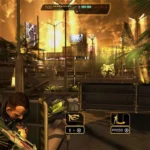 Deus Ex: A Masterpiece of Storytelling, Characters, and Action
Deus Ex: A Masterpiece of Storytelling, Characters, and Action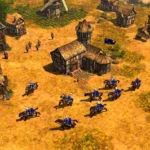 Age of Empires 2: Building Empires in the Medieval Era
Age of Empires 2: Building Empires in the Medieval Era Diablo 2: Lord of Destruction - A New Era of Darkness
Diablo 2: Lord of Destruction - A New Era of Darkness Paris 1313: The Mystery of Notre-Dame Cathedral - A Journey Through Medieval Intrigue
Paris 1313: The Mystery of Notre-Dame Cathedral - A Journey Through Medieval Intrigue Alone in the Dark 4: The New Nightmare - The Return of Survival Horror Excellence
Alone in the Dark 4: The New Nightmare - The Return of Survival Horror Excellence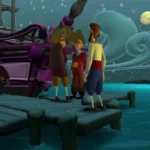 Escape from Monkey Island – PC Review
Escape from Monkey Island – PC Review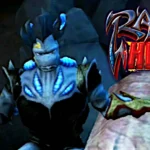 Raze’s Hell – Help Raze Regain His Freedom
Raze’s Hell – Help Raze Regain His Freedom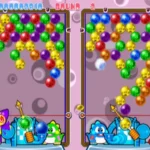 Super Bust-A-Move: The Puzzle Craze That Never Gets Old
Super Bust-A-Move: The Puzzle Craze That Never Gets Old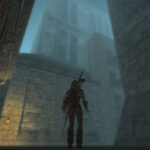 Blade: Edge of Darkness – Unleash the Shadows in This PC Classic
Blade: Edge of Darkness – Unleash the Shadows in This PC Classic
![PC Longplay [247] Medal of Honor: Allied Assault (Part 1 of 3)](https://i.ytimg.com/vi/lxF0hXJUqVc/hqdefault.jpg)
Leave a Reply